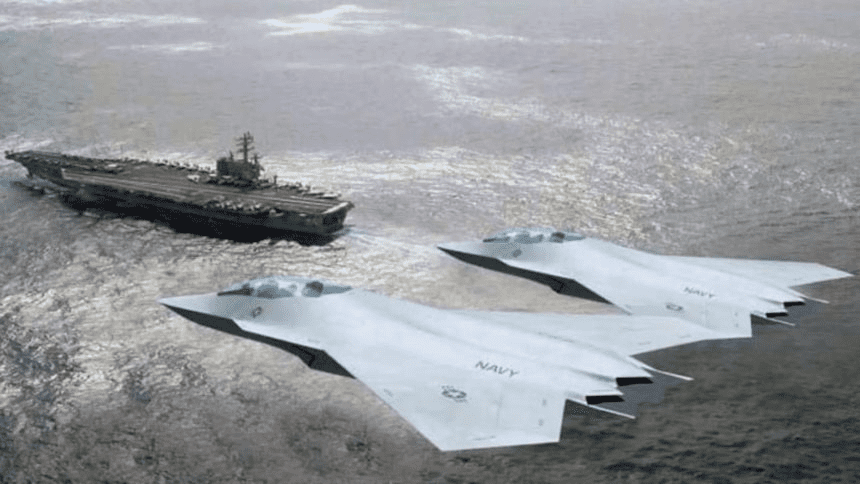Editorial by Captain John Konrad (gCaptain) In an era distinguished by the realization of monumental projects, from the sprawling LNG terminals of Louisiana to the transformative reshaping of Manhattan’s skyline, America’s shipbuilding industry has curiously stagnated. One might be tempted to attribute the success of these colossal undertakings, as well as the engineering marvels of China, to breakthroughs in engineering and architecture alone. However, this only tells half the story.
In this age of groundbreaking achievements and audacious ventures, we have witnessed the birth of innovative “Codes of Capital” and financial engineering techniques, propelling various industries to new heights. Yet, a puzzling void persists in the realm of ship construction, where the transformative power of financial engineering remains strikingly absent. The US Maritime Administration (MARAD), led by the seasoned US Navy Rear Admiral Ann Phillips and US Navy veteran Pete Buttigieg, should ostensibly serve as the Navy’s bridge to Wall Street, harnessing cutting-edge financial tools to breathe new life into domestic shipbuilding. However, the US Navy has failed to provide any backing or lent any political influence to MARAD.
This alarming disconnect has left both America’s Navy and Merchant Marine fleet trailing behind, antiquated, and unprepared to face the rapidly shifting global challenges, particularly in strategic regions such as the Black Sea and South China Sea. We must confront this stark reality head-on and take decisive action to ensure the revitalization of our naval and maritime capabilities, lest we continue to fall behind in an increasingly complex and unpredictable world.
The US Navy, MARAD, US Coast Guard and Federal Maritime Commission’s (FMC) relative ignorance of contemporary maritime finance intricacies and novel financial engineering mechanisms also hinders the US from obstructing Wall Street capital flows to foreign shipping firms, inadvertently fueling the expansion of China’s military shipyards. These yards produce both commercial and deadly war vessels. By grasping these financial tools and capital codes, the US Navy could bolster domestic shipyards like Huntington Ingalls while stymieing capital streams bolstering Chinese warship production.
The time has come for the shipbuilding industry – with the blessing of the US Navy – to embrace the financial revolution and leverage the same innovative tools of financial engineering that have propelled other sectors – both domestic and foreign – to new heights but, while America’s largest shipyard are for-profit companies, the US shipbuilding industry is a monopsony, a market structure in which a single buyer, the US Navy – an organization that despite its love of quotes like Admiral Farrugut’s “Damn the torpedoes, Full Speed Ahead” – has become averse to risk and has fully detached itself from the perils of Wall Street. US Navy admirals do not understand the new tools of capital and do little to reach out to experts and learn them. gCaptain could not find a single USN Admiral at the last year’s popular CMA shipping event or the venerable Marine Money Week on Wall Street. This aversion to high finance has directly contributed to the Navy’s inability to build ships on-time and on-budget and has put the nation, and the free navigation of commerce on the seas, at grave risk.
MARAD And Title XI
At the heart of the issue lies the Title XI Federal Ship Financing Program, a once-heralded solution to shipbuilding finance that has since fallen out of favor. In today’s rapidly evolving financial landscape, the program is ill-equipped to adapt and work with modern mechanisms. This outdated approach leaves a gap in funding and undermines the competitiveness of the American shipbuilding industry.
Today some large shipyards may use a modicum of Title XI funding, but it is not at all common. The Title XI Program was established to provide loan guarantees to support the construction or reconstruction of U.S. flag vessels in American shipyards. However, over the years, it has faced challenges that have made it unattractive for large shipyards.
The reasons why Title XI has failed include:
- Bureaucratic challenges: The Title XI application and approval process can be time-consuming and cumbersome. MARAD has a total of less than 1000 employees and struggles to process paperwork or manage the program effectively. Title XI involves multiple levels of review, which can discourage large shipyards from pursuing this funding option.
- Availability of alternative financing: Large shipyards often have access to alternative financing options, such as private loans or capital from the parent company. These alternatives have fewer strings attached, and offer favorable terms or a faster and more efficient process than Title XI funding.
- Program limitations: The Title XI program comes with certain restrictions and requirements, such as the need for ships to be registered under the U.S. flag and built in American shipyards. This can limit the flexibility of large shipyards in their operations and the types of projects they can undertake.
- Insufficient funding and budget constraints: The Title XI program has faced budget constraints and reduced funding levels over the years, which can limit the availability of loan guarantees for large shipyards. In some cases, the allocated funds might not be sufficient to meet the financial needs of large shipbuilding projects. When recently asked by Congress what additional funding is needed, Rear Admiral Ann Phillips responded that she would get back to congress on that issue. The fact that a Navy admiral and Commandant of the US Maritime Service does not have a ready list of budget needs she can immediately provide congress is highly troubling.
- Perceived risks and past defaults: In the past, there have been high-profile defaults on Title XI loan guarantees, which have led to concerns about the program’s viability and risk management. Risk management is crucial for financial engineering and in China – and with the SVB bailout secured in Silicon Valley as well – the majority of risk is backed by the government. In US shipbuilding, however, most financial risks are shouldered by the shipyard, as we have recently seen with the failure, and subsequent firesale, of VT Halter.
Read: US Shipyards – Record Revenue At Firesale Valuations
Moreover, the Maritime Administration (MARAD) has struggled to produce an effective national maritime strategy or implement timely updates. In fact, it has been nearly two decades since MARAD completed the last national shipyard survey many banks once used to help justify loans. This bureaucratic inertia has stifled innovation and prevented the adoption of novel financial engineering techniques that could otherwise drive growth in the sector.
The US Navy Avoids Wall Street
The US Navy’s aversion to Wall Street and its lack of expertise in modern financial engineering further compound the problem. A reluctance to embrace new financing methods, coupled with an overreliance on traditional funding sources, has resulted in significant cost overruns and delays for navy shipbuilding projects. MARAD has an office just off Wall Street run by a retired US Navy Captain but there is little evidence that US Navy Admirals give his office much support.
These factors, taken together, have created an environment in which American shipyards struggle to expand and modernize. The inability to finance the necessary expansion and modernization puts national security at risk, as it limits our capacity to build and maintain a robust naval fleet capable of responding to emerging global threats.
To address these challenges, the American shipbuilding industry must embrace the financial revolution that has transformed other sectors. This will require a reevaluation of existing financing programs like Title XI, along with the development of new, innovative financing models tailored to the unique needs of shipbuilding.
Furthermore, the US Navy and US Coast Guard must work together with MARAD to create a comprehensive national maritime strategy that fosters innovation and attracts investment. This strategy should prioritize the adoption of cutting-edge financial engineering techniques, which can drive growth and reduce costs in the shipbuilding sector. The US Navy must also reassess its relationship with Wall Street and explore new ways to finance ship construction projects. By embracing modern financial engineering methods and partnering with private investors, the Navy can reduce cost overruns and delays while ensuring a more sustainable and competitive shipbuilding industry.
Abismal Financial Valuations
To start the Navy must create a joint working group with the USCG, MARAD, and top financial engineering experts (this should be rather easy considering the US Naval Academy Alumni directory is chock full of experts at hedge funds and capital restructuring shops like Bridgewater Capital, Structured Capital, Mitre and Bowen) to quickly educate itself on employing the lessons learned from Katharina Pistor – Professor of Comparative Law and director of the Center on Global Legal Transformation at Columbia Law School – in her seminal work, “Code of Capital.” By leveraging the power of legal structures and capital, we can transform shipbuilding finance and reinvigorate the industry.
The shipbuilding sector, once a powerhouse of American industry, has experienced a decline in recent years. But it’s not just a decline in output that’s worrisome, it’s also a decline in valuation. The minuscule market capitalization of our nation’s largest shipyards makes access to capital markets difficult and financing terms expensive.
The cost to build a ship in the United States is astounding but these prices don’t always lead to profit. The most expensive ship ever built, Gerald R. Ford class US Navy Aircraft Carrier, came with a price tag of $13.3 billion, and its builder, Huntington Ingalls Industries (HII), has three more under construction with Congress wanting to purchase more. The company also has multi-billion dollar contracts to build large-deck amphibious ships, nuclear attack and ballistic missile submarines, advanced destroyers, and unmanned vessels. HII has a pipeline of over $60 billion in contracts, with more on the way. But Wall Street only values the company at $9.75 billion.
To put that in perspective, the United State’s largest and most important shipbuilder, HII, is worth:
- Less than 1/4 the price Elon Musk paid for Twitter.
- Just over 1/10th the market capitalization of Boeing
- About 1/14th the value of the largest US defense contractor Raytheon.
- Less than the combined price of Peleton and Roku after their prices burst
VT Halter – builder of the USCG’s forthcoming heavy icebreakers – is worth considerably less. Only $15 million. Yes, million with an M.
The firesale of VT Halter for $15 million proves the financial difficulties of shipyards extend well past the financing of ships themselves but also include research and development, investments in upgrades, retention of shipyard workers, and the sale of assets.
To reverse this trend, we must put shipbuilding on equal footing with other defense contractors like aerospace (e.g. Raytheon has a current market valuation of $144 Billion) by looking beyond traditional financing models and considering the insights Pistor offers in her examination of the legal system’s role in creating and preserving wealth. In doing so, we can develop innovative strategies that harness the power of the law to reinvigorate shipbuilding finance.
A New Code Of Capital For Shipbuilding
First and foremost, we must explore the full potential of the legal Code Of Capital tools Pistor outlines in her book such as contracts, property rights, and collateral to create a more secure and efficient financial environment. By attracting a diverse range of investors, including private equity and institutional capital, we can pool resources and expertise to drive a new wave of shipbuilding projects.
Public-private partnerships (PPPs) are another crucial element of this transformation. By encouraging collaboration between public and private entities, we can share risks and rewards more equitably, ensuring efficient and cost-effective shipbuilding processes. This will require leadership from the Navy with full and joint assistance and cooperation provided to our nation’s shipping regulators (USCG and Federal MAritime Commission) and the entity legally empowered by Congress to support and subsidize shipyards: MARAD.
Flexibility and innovation should be at the heart of our approach to shipbuilding finance. New models, like structured finance through asset-backed securities or project bonds, can help secure funding for specific projects while offering investors more predictable returns.
Of course, none of this would be possible without strong government support. Tax breaks, low-interest loans, and grants can make the industry more competitive globally and stimulate further investment.
An FDIC For Shipyards
Additionally, it’s essential to strengthen legal shields for shipyard patrons via lucid rules and enforcement and foster a haven for both domestic and global investors. We could do this by emulating the US Government’s risk assumption for Silicon Valley Bank startups. Erect an “FDIC for Ships & Shipyards” to nationalize failed enterprises and transfer defunct commercial ships turning the former into public shipyards and sending the latter to Military Sealift Command or MARAD’s Ready Reserve. Gicing banks a guarantee the US Navy will purchase US-flagged ships from bankrupt or struggling shipping companies at fair prices, could fuel low-cost loans for domestic newbuilds and provide a steady influx of Sealift ships and tankers by safeguarding banks from the risks of an inherently dangerous – but critical to national security – industry.
Streamlining regulations is another key component of this strategy. By reducing bureaucratic hurdles and delays, we can create a more business-friendly environment that encourages new investments and fosters growth. To do that we need to clear the US Navy’s Badger Problem and redirect many of NAVSEA’s 86,000+ employees from conducting surveys and studies to embracing servant leadership. NAVSEA must turn from “preventing cost overruns and contract violations” to asking shipyards “what can we do to help you succeed?”
And the Navy itself must stop gold plating requirements (e.g. requiring fuel lines to be titanium instead of high-quality steel), watching money flow into NAVSEA program offices and not come out the other side, and should assist American shipyards in creating partnerships with yards in Korea and Japan.
Most important of all the US Navy must work harder on the 30-year shipbuilding plan they failed – despite a congressional mandate – to provide in the new budget announced this week. And for a shipbuilding plan to work, they must also develop a national naval strategy with includes sealift, addresses the critical tanker/mariner crisis, and includes the USCG and MARAD. This is important because financial engineering is engineering – and engineers can not build effective models without clear guidance.
Most Important Of All: US Navy Must Lean Into Risk
Lastly, transparency and information sharing are vital to the industry’s success. Accurate, timely data on projects, costs, and risks will empower investors to make informed decisions, fostering trust and driving investment in the shipbuilding sector. The Navy can use the tools of financial engineering and coded capital to underwrite Silicon Valley startups to build innovative new software, tools, and processes for shipyards.
The only problem is that working with a failing MARAD or spending significant amounts of time on Wall Street is a major career risk no US Navy Admiral is currently willing to take. To fix this the Secretary of the Navy and other civilian military leadership or the White House needs to back this plan.
Conclusion
In conclusion, by applying the insights from Pistor’s “Code of Capital” to the American shipbuilding industry, we can create a more robust and attractive financing environment. The resulting renaissance will not only revitalize the industry and create jobs but also strengthen America’s position in the global maritime sector. It is time to harness the power of the law and usher in a new era of shipbuilding finance.
But to do any of this the US Navy must be a better customer, end its aversion to Wall Street, and start working directly with Navy veteran Pete Buttigieg and provide direct leadership in rebuilding the programs and systems at MARAD needed by financial engineers.
Avoiding Wall Street Watching and MARAD continue to drown in the waters of government obscurity is no longer an option US Navy leadership (or the USAF which consumes the majority of fuel, or the Army which needs to move tanks overseas) can afford.
Tags:

 Join The Club
Join The Club











